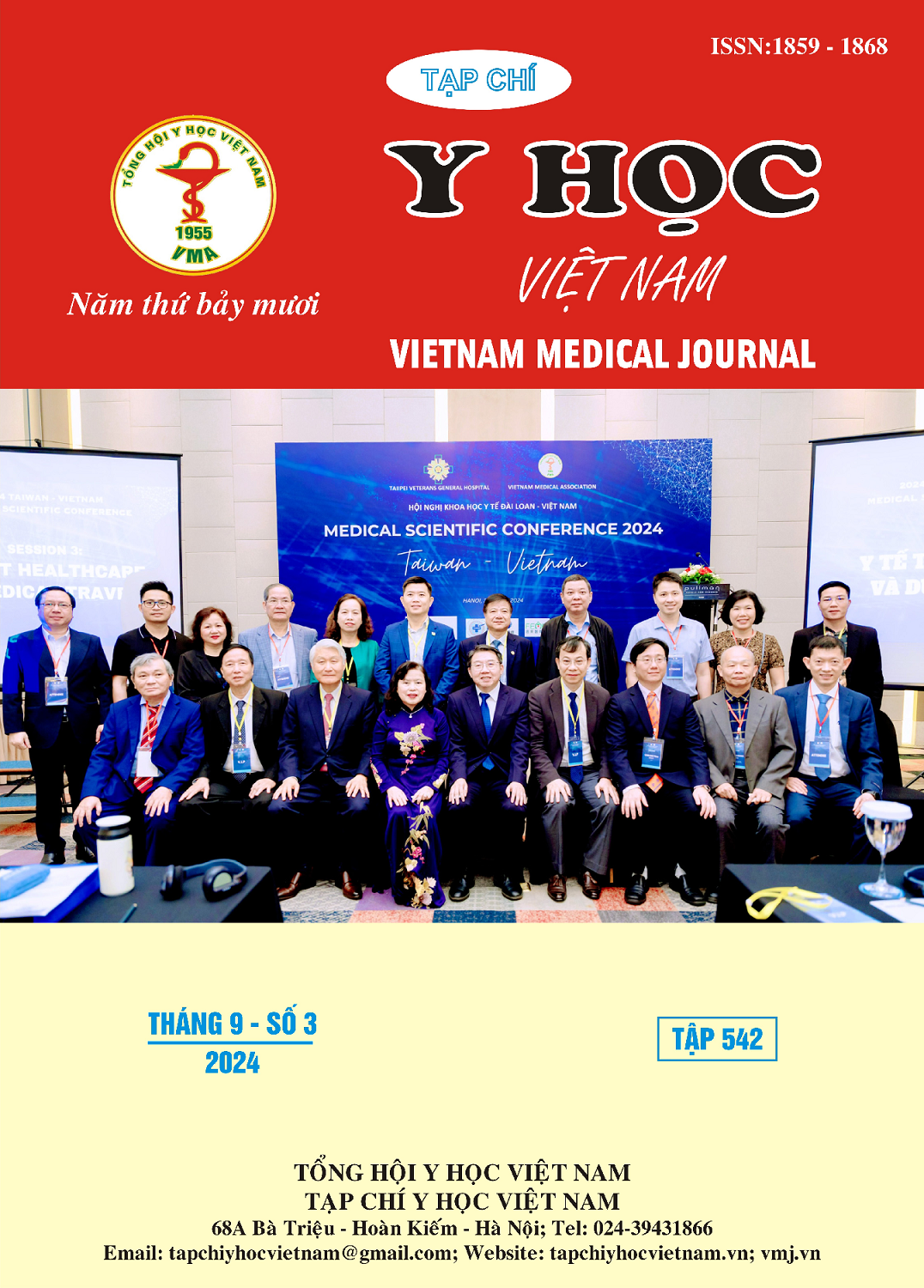EFFICACY AND SAFETY OF ROTATIONAL ATHERECTOMY BY ROTABLATOR IN PERCUTANEOUS CORONARY INTERVENTION
Main Article Content
Abstract
Background: Rotational atherectomy (RA) is an adjunctive method in percutaneous coronary intervention (PCI) for calcified lesions. However, there remains considerable debate regarding the procedural approach, efficacy, and safety of this technique. Objectives: To investigate the implementation and evaluate the efficacy and safety of rotational atherectomy using the Rotablator system in PCI. Subject – method of study: This observational, retrospective study was conducted on 223 cases that underwent RA using the Rotablator system at the University Medical Center Ho Chi Minh City from January 1, 2019, to October 31, 2023. Results: The average age of the study population was 69.5±9.6 years, with 59.6% being male. Acute coronary syndrome was the cause of admission in 78.9% of patients, with three-vessel coronary artery disease (CAD) accounting for 74.9% of cases. The most common target lesion site was the left anterior descending artery (66.4%). Intravascular ultrasound (IVUS) was used in 93.6% of cases. Primary RA strategy was employed in 67.7% of cases. Angiographic success was achieved in 96.4% of cases. Procedural complications included coronary perforation (2.2%), coronary dissection (2.2%), slow or no-reflow (4.0%), and acute cardiac tamponade (0.9%). In-hospital major adverse cardiovascular events (MACEs) occurred in 8.5% of patients, mainly due to periprocedural myocardial infarction (5.8%). Conclusion: Our study demonstrates that rotational atherectomy using the Rotablator system in PCI is a safe and effective treatment method with a high success rate.
Article Details
Keywords
rotablator, khoan cắt mảng xơ vữa, vôi hóa động mạch vành, can thiệp động mạch vành qua da.
References
2. Lee K, Jung J-h, Lee M, et al. Clinical Outcome of Rotational Atherectomy in Calcified Lesions in Korea-ROCK Registry. 2021;57(7):694.
3. Bouisset F, Barbato E, Reczuch K, et al. Clinical outcomes of PCI with rotational atherectomy: the European multicentre Euro4C registry. EuroIntervention. 2020;16(4):e305-e312.
4. Sakakura K, Taniguchi Y, Yamamoto K, et al. Comparison of the incidence of slow flow after rotational atherectomy with IVUS-crossable versus IVUS-uncrossable calcified lesions. 2020; 10(1):1-9.
5. Abdel-Wahab M, Toelg R, Byrne RA, et al. High-speed rotational atherectomy versus modified balloons prior to drug-eluting stent implantation in severely calcified coronary lesions: the randomized prepare-CALC trial. 2018; 11(10):e007415.
6. Kawamoto H, Latib A, Ruparelia N, et al. In-hospital and midterm clinical outcomes of rotational atherectomy followed by stent implantation: the ROTATE multicentre registry. 2016;12(12):1448-1456.
7. Cortese B, Aranzulla TC, Godino C, et al. Drug-eluting stent use after coronary atherectomy: results from a multicentre experience–The ROTALINK I study. 2016;17(9): 665-672.
8. Abdel-Wahab M, Richardt G, Joachim Büttner H, et al. High-speed rotational atherectomy before paclitaxel-eluting stent implantation in complex calcified coronary lesions: the randomized ROTAXUS (Rotational Atherectomy Prior to Taxus Stent Treatment for Complex Native Coronary Artery Disease) trial. 2013;6(1):10-19.


